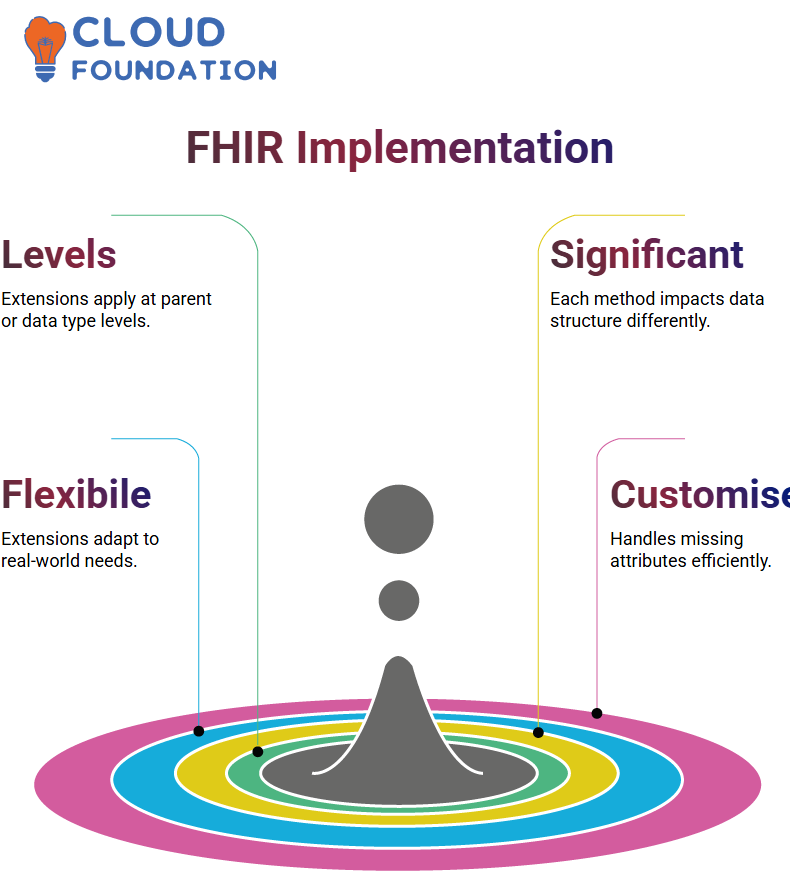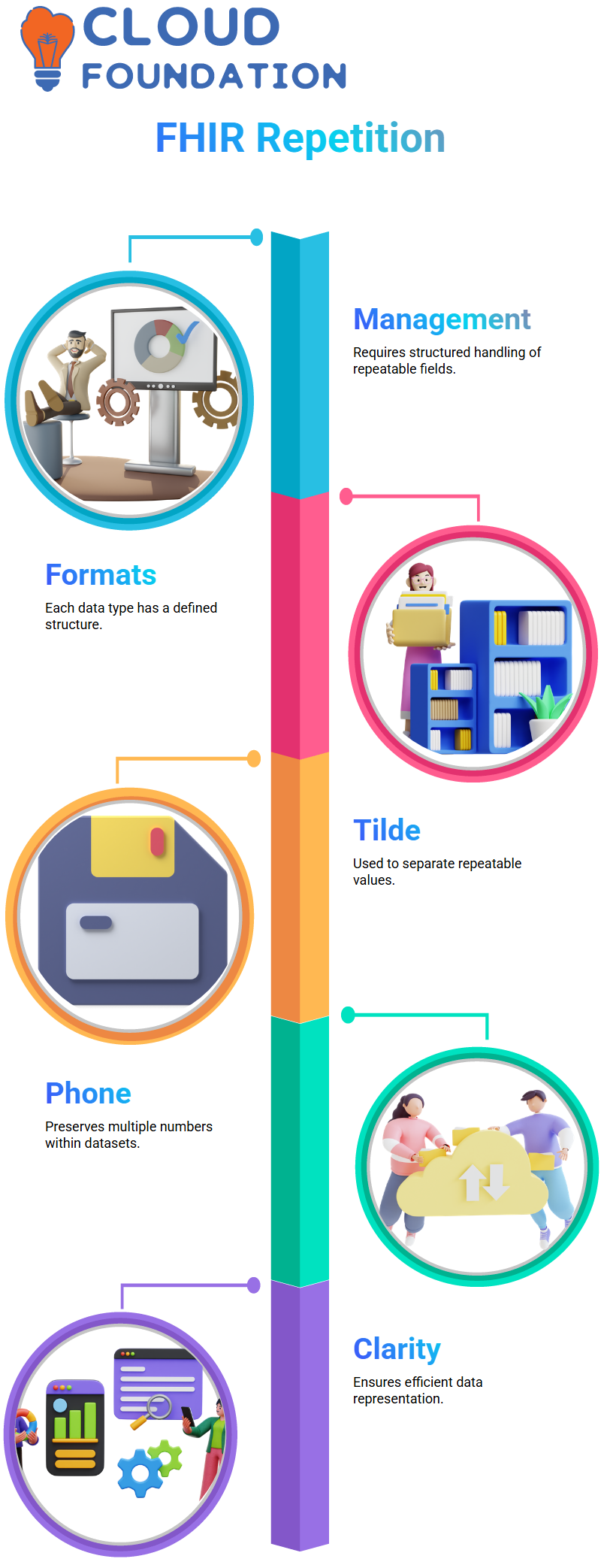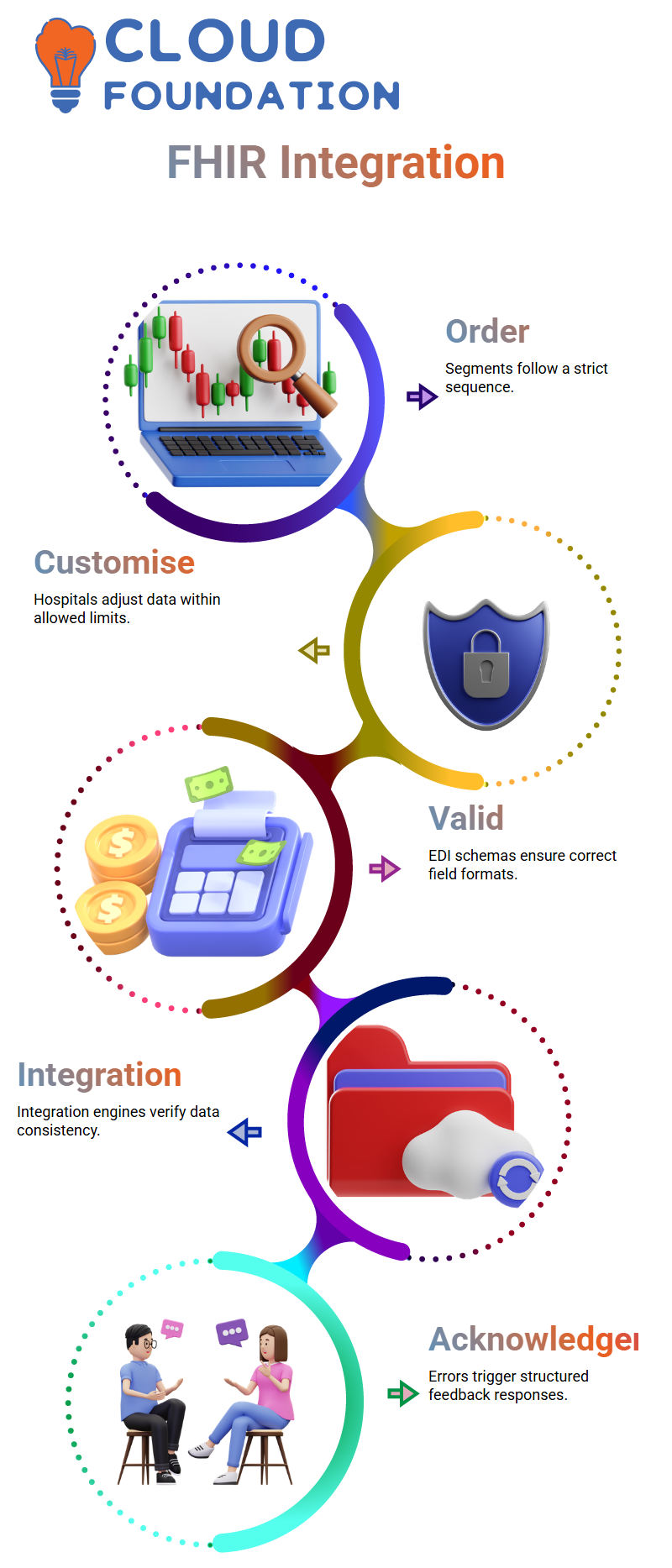Advanced Tutorial on FHIR HL7 Extensions & Segments
FHIR HL7 Extensions
Today, we will delve more thoroughly into FHIR HL7 extensions. In essence, an extension serves to manage those 20% of cases that don’t easily fit within its standard attributes and thus require extra workarounds or modifications for FHIR HL7 standard attributes.
FHIR HL7 operates under an 80/20 principle: for most implementations, 20% of its attributes can cover 80%. There remains 20% allocated to implementation that cannot be covered entirely with that 20%; extensions offer flexibility and customisation to cater to particular deployment scenarios.
Are You Struggling with Extending FHIR/HL7 Data Attributes Effectively? Today, we will explore how extensions can enhance practitioner resources.
FHIR HL7 requires using an underscore line to delineate attributes, offering greater flexibility when expanding data types. For instance, let’s say you need to add the weekly schedule of one of their practitioners to their resource pool.
How should we structure it year-round? Utilising URLs allows us to reference resources accurately. FHIR HL7 relies heavily on these structures when adding extensions; thus, their implementation must also play an integral part in its functionality.

Why FHIR HL7 Extensions Matter?
FHIR HL7 extensions enable us to map data that would otherwise fall outside standard resources.
Consider patient resources; mapping race using built-in attributes alone is often impossible, which is where extensions come into play, allowing systems to accommodate information not directly specified by FHIR HL7.
FHIR HL7 stands out by not forcing rigid structures onto implementations; instead, it recognises their variations and provides tools to accommodate them as necessary.
How to Implement FHIR HL7 Extensions?
Where should extensions be applied in FHIR HL7? As is true with Z segments in HL7, extensions can be added at various levels, such as the parent level or data type level; each method holds special significance.

Assuming, for instance, that no race storage attribute existed within their system, an extension can be added accordingly to meet real-world needs and ensure effective implementation.
FHIR HL7 Extensions in Action
Consider gender representation within FHIR HL7 as another scenario – for instance, if an organisation requires transgender data mapping within FHIR HL7, this extension enables precise mapping within this system.
FHIR HL7 extensions utilise an exclusive URI and predefined value type to guarantee compatibility and flexibility during data exchange processes.
Complex Extensions in FHIR HL7
FHIR HL7 extensions can be complex and time-consuming to implement correctly, which makes arranging practitioner availability for Monday difficult without careful planning and management.
Here is one solution: we create a URL just for Monday, then define an availability period with start and end times in FHIR to track practitioner availability more precisely than ever before.
Value Period objects typically provide date and time information in an organised structure. Time management plays an integral part in FHIR HL7 healthcare workflows; when replicating this structure over an entire week it must be repeated accordingly.
Complex Data in FHIR HL7
What happens when data types themselves are complex? Take addresses: FHIR HL7 defines address fields, such as street and PO box addresses, with its “line” attribute; however, what if we need specific house number fields instead? Thanks to extensions, we can add customised attributes without impacting their core structure.

FHIR HL7’s flexible data field extension functionality stands out as remarkable, whether we are dealing with primitive types or complex objects; its flexibility remains intact.
Multiple Extensions in FHIR HL7
FHIR HL7 provides us with the opportunity to define multiple extensions at various levels. In order to add gender details at the parent level, for instance, additional objects need to be repeated and duplicate keys cannot be shared as each extension requires its own key structure.

FHIR HL7 provides extended gender codes which encompass transgender identities to ensure accurate yet inclusive data representation within healthcare framework. This ensures accurate yet inclusive representation in data.
FHIR HL7 Data Repetition
FHIR HL7 requires proper management of repeatable fields to operate efficiently; each data type has its own format for populating and structuring them appropriately. When working with repeatable fields, use a tilde () between values in the repeatable fields for clarity within the system.

FHIR HL7 provides us with an effective means of managing phone numbers easily: If a patient has multiple numbers–for official, vacation and work purposes–simply separate them with a tilde to preserve each number’s integrity within our datasets.
URLs in FHIR HL7
FHIR HL7 requires extensions to have unique URLs; for instance, to define a practitioner’s schedule using HTTP references, such as http://ghs.org/practitioner/schedule, which serves as the unique identifier for their timetable.
Working with FHIR HL7 requires understanding mandatory elements, like URL definitions. Every URL requires either an initial predetermined value or further extensions to maintain accessibility within its structure and ensure data remains accessible. This guarantees data remains accessible throughout its lifecycle.
FHIR HL7: Managing Segments and Fields
FHIR HL7’s foundation rests upon an ordered sequence of segments; each serves a particular function in an ordered structure. Integration engines may reject messages with disorganized segments – for instance placing an MSH segment before PID segment would violate its schema sequence definition and may lead to rejection by integration engines.
FHIR HL7 mandates structured data input. However, hospitals typically customize this standard within permissible boundaries–for instance by shortening message control ID length based on hospital procedures to maintain compatibility while adhering to core specifications.

Validating Data in FHIR HL7
FHIR HL7 data validation relies on predefined EDI schemas which ensure fields adhere to required formats – with minimum and maximum values being specified within these schemas. When hospitals alter aspects of this schema, validation processes check compliance before authorizing data flow.
Integration engines utilize structured validation processes to ensure seamless interoperability when exchanging healthcare data. If an incorrect segment sequence or invalid data length occurs, integration engines quickly discard it while sending an acknowledgement that indicates what went wrong, providing for seamless data exchange.
FHIR HL7 Message Segments
FHIR HL7 makes segment identification an integral component. Each segment begins when its respective ID number appears; but how is its end indicated? A carriage return serves this function on every segment except one; every segment should contain at least one as it signals their conclusion.

Are You Gazing on My Screen and Searching for FHIR HL7 Segments? As seen here on my screen, a test tool sample demonstrates this point. Specifically, each segment apart from the last has an associated separator to identify when FHIR HL7 Segments end – thus serving as integration engine’s means for detecting its endpoint.
Role of Segment Separators in FHIR HL7
Segment separators in FHIR HL7 function similarly to field separators: each field separator can be represented with an open pipe “|”, component separator by certain characters and subcomponent separator by special functionalities; but did you know there was also an invisible segment separator (represented as “r”) which wasn’t always visible within standard notation?
For an in-depth view, it may help to inspect an integration engine such as Rhapsody closely – its carriage return printing clearly reveals data processing within its system; similar engines employ similar processes when handling FHIR HL7 messages.
Decoding Characters in FHIR HL7 Messages
FHIR HL7’s messaging structure employs special characters known as encoding characters for message parsing purposes; one such field being MSH.2. These special characters guarantee structured data within FHIR HL7.
These FHIR HL7 characters used for encoding: “”, “>”, &”,,”,””,,%”. Each play an essential part in structuring and isolating components within messages; integration engines recognise these symbols to ensure data integrity.

Navya Chandrika
Author



